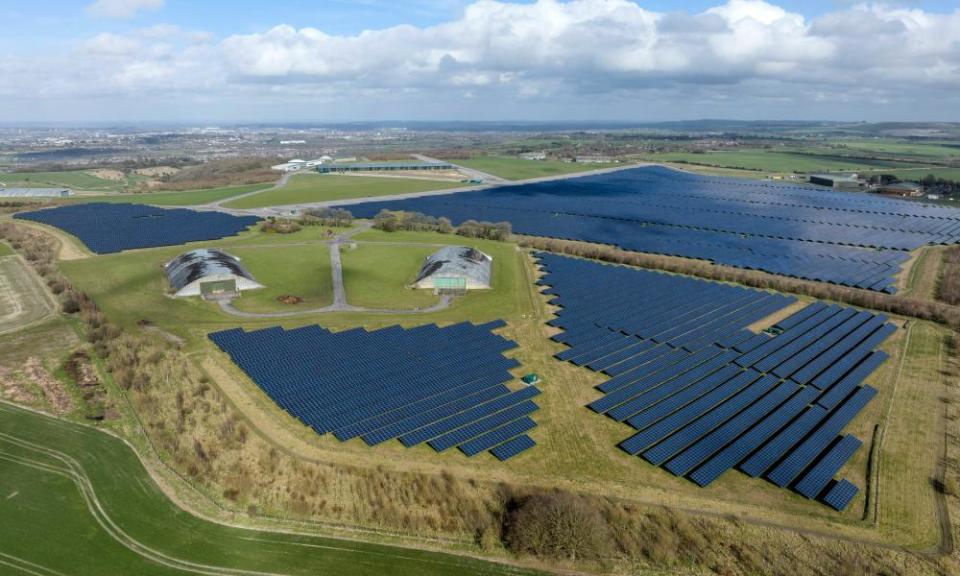Liz Truss’s big-bucks energy plan notable for what it lacks

After three days in office, Liz Truss’s administration could not be expected to have every detail of its big-bucks energy strategy nailed down. Even so, the striking feature – beyond the well-trailed two-year price cap for households – was how much has been filed under “to do” or “details to follow”. At least six areas of the canvas are virtually blank.
First, six months of “equivalent” support for businesses, public sector bodies and charities inevitably prompts the question of what happens in April. On what basis will deserving causes for ongoing help be selected?
Second, negotiations with electricity generators – mainly nuclear power plants and wind and solar projects – to reduce their prices seem barely to have started. The principle of switching firms to contracts-for-difference is fine (for reasons discussed in this column previously) but success will be determined solely by how low prices can be made to fall.
With wholesale prices at £400-ish per megawatt hour, some generators’ windfall profits will be enormous. Would a good outcome for taxpayers be a contracted price close to £40, which is roughly where the last capacity auction came out?
Or, given that lucrative old-style “renewables obligations certificates” have obvious value, are we talking £100 as a realistic goal? The difference matters hugely if new contracts could run as long as 15 years.
Ministers can’t negotiate in public but it’s hard to detect any sense that the Treasury itself knows where it is aiming. The scheme, in essence, is the alternative to Labour’s idea for an extended windfall tax and ministers must be muscular: this should be a “negotiation” in the sense that generators are told, more or less, the definition of a fair price.
Third, will the Treasury’s joint £40bn liquidity support scheme with the Bank of England, due to be launched “by the end of October or sooner”, arrive in time?
Anecdotal evidence suggests pips are squeaking among power firms as they attempt to sign collateral-backed hedging contracts in the wholesale market. It would be embarrassing, to put it mildly, if replacing Ofgem’s price cap leads to more corporate failures. The situation does not need more Bulbs.
Fourth, the terms of reference for the new “Energy Supply Taskforce” need to be clear. The government is underwriting, in effect, the gas and electricity purchases of private companies so it needs to know that contracts are being signed on hard commercial terms. There is an obvious risk that the odd billion slips between the cracks.
Fifth, while “fundamental reforms to the structure and regulation of the energy market” are desperately needed, there’s no hint of quick wins. One of Ofgem’s many failures was the regulator’s inability to spot that coupling the price of electricity to the price of gas would cause trouble one day. A review of that outdated pricing set-up is already under way, but needs to be accelerated.
Sixth, there was nothing new on measures to improve energy efficiency, even though cries for a mass-insulation programme for public buildings and council houses have been heard for months. A public information campaign is better than nothing, but other European countries have been on the job for ages.
On the plus side, the domestic price cap, for all its imperfections (untargeted and of unknowable expense), provides households with certainty this winter. And Truss has swallowed her free-market instincts and understood that intervention at the wholesale end of the energy market must be part of the same deal.
It is impossible, though, to avoid the conclusion that the plan would have fewer gaps if big decisions had been made months ago. A long summer of Tory leadership larks has had consequences.
Melrose has work to do
Melrose Industries’ private equity-style mantra is “buy, improve, sell”. After acquiring GKN, the grand but misfiring FTSE 100 automotive and aerospace engineer, in a bitter battle in 2018, it reckons it’s a long way down the track with the improvement part of exercise. Operations-wise, GKN looks fitter. Finding buyers, however, is proving tricky.
Thus there will be a demerger in London next year of the automotive business. In commercial terms, a split makes sense. The two halves of GKN have always looked destined to go different ways eventually, and separation allows both companies to hunt for bolt-on acquisitions.
But, as a way to “unlock value for shareholders” – the other ambition – there is work to do. Melrose’s shares fell 9%. It was a reminder that, in the end, the private equity model requires a crystallisation event, in deal-making lingo. A demerger doesn’t qualify on that score.

 Yahoo Finance
Yahoo Finance 